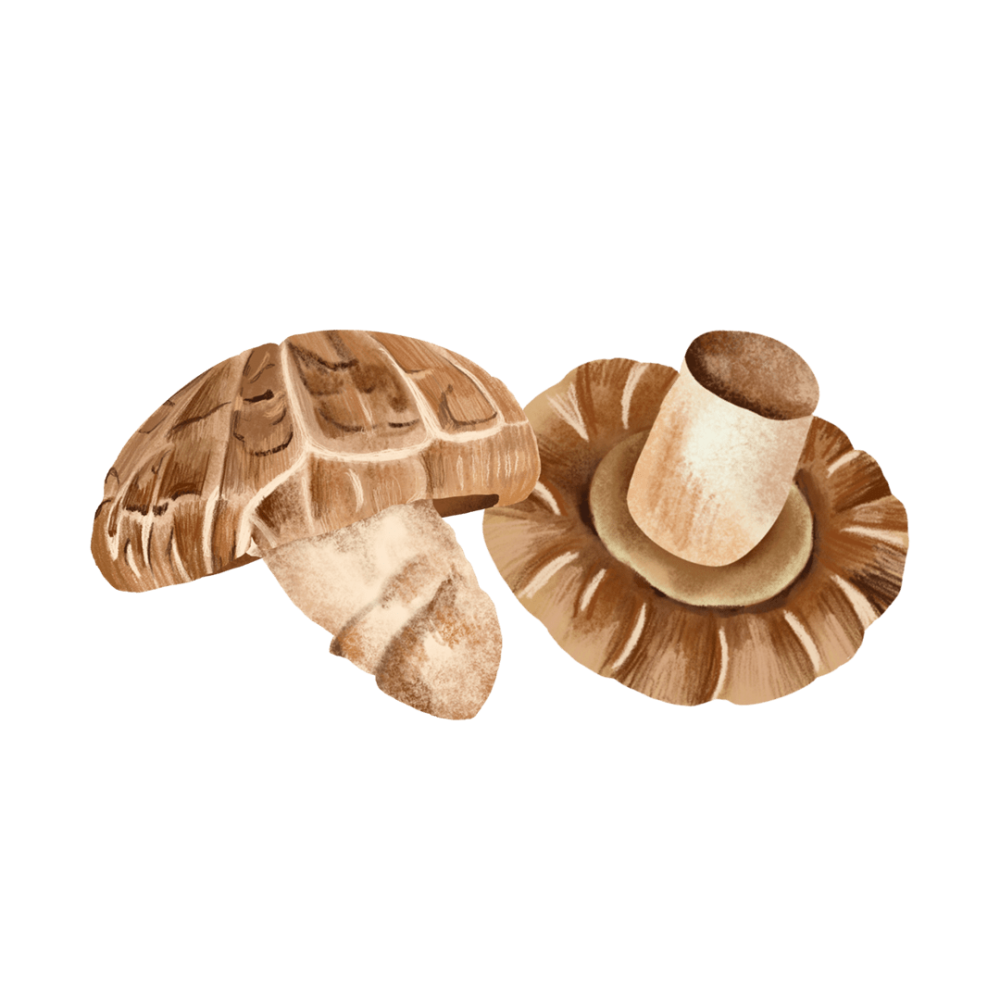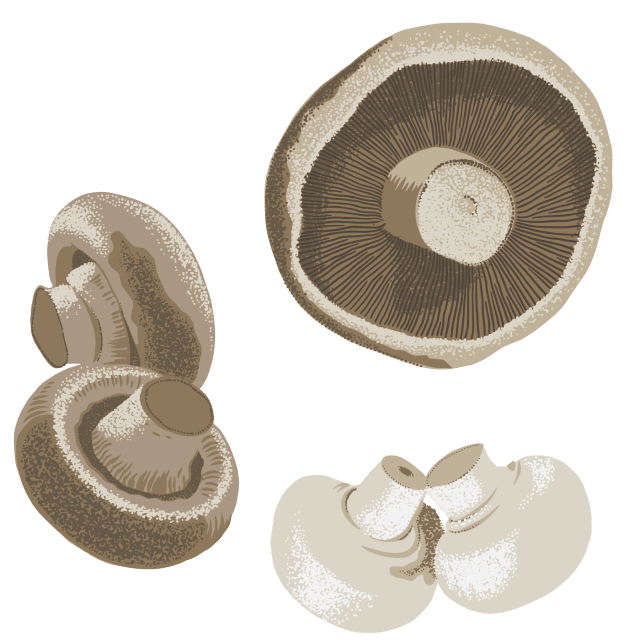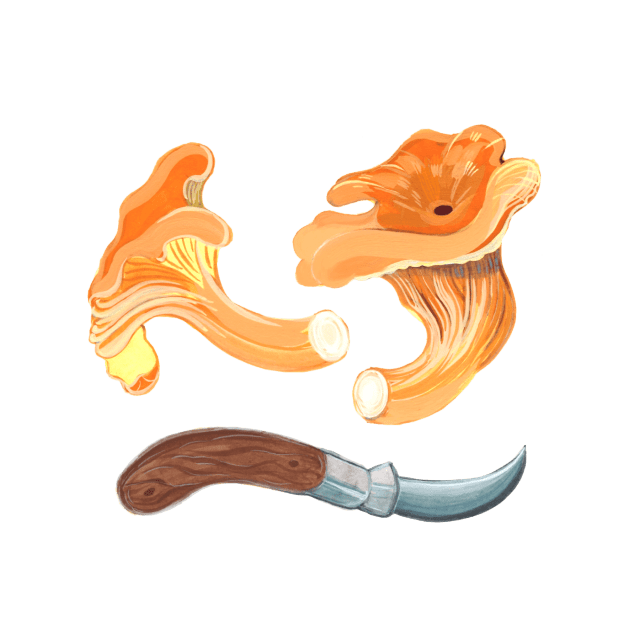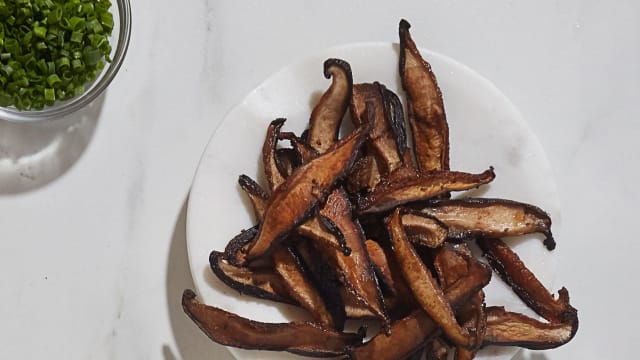Shiitake

Latin name: Lentinula edode
Other names: sawtooth oak mushroom, black mushroom
Uses: edible mushroom
What are shiitakes?
Shiitakes are a species of mushroom cultivated and consumed around the world, especially in Japan, China, and Korea. They’re sold both dried and fresh, sliced and whole, sometimes full-size (with a cap up to five inches wide) and sometimes in “baby” form. You may have encountered them diced, in dehydrated soup mixes or the vegetable packets of some brands of instant ramen.
Why are shiitakes healthy?
In in East Asia, shiitake mushrooms have been used as medicine for millennia, mainly for improving vitality and immune function. The mushrooms are one of highest sources of natural dietary copper, a mineral that supports healthy blood and bones. They also contain the chemical compound eritadenine and the polysaccharide lentinan, both of which help maintain lower cholesterol levels in the blood to promote heart health.
Shiitake like other mushrooms, are also high in fiber and B vitamins and are considered a longevity food. Mushrooms are also the only natural plant-based source of dietary vitamin D, which plays a role in bone health, mood, and immune function.
What do shiitakes taste like?
High in glutamic acid, shiitakes add instant umami to anything they touch. They have a slightly earthy-woody, savory flavor and meaty texture that lets them step in as the protein in pretty much any vegetarian dish.
How do I use shiitakes?
In Japan and Korea, dry and fresh shiitakes are often simmered to make vegetarian versions of dashi stock or to flavor stews, soups, and rice dishes. If you want to use dried shiitakes in dishes that aren’t being simmered (like stir-fries or noodles), you’ll need to soak them in hot water to soften them up — strain the soaking liquid to remove any dirt and reserve it for adding richness to sauces and soups. Shiitakes hold their texture well in hot pots and slow braises. Their meaty texture makes them a natural fit for veggie burgers or chili when ground or finely diced.
What do shiitakes pair well with?
Shiitakes pair well with almost all of the dominant flavors of Chinese, Korean, and Japanese cuisines: soy sauce, ginger, sesame, and scallion. They love noodles and pasta, and are a standard addition to veg-heavy japchae (the yam noodles bounciness is a perfect foil for the meaty texture) but they also go great with penne or orecchiette. Shiitakes’ earthy, savory flavor also plays extremely well with the slight bitterness of walnuts and winter greens and with sour cream and pungent, veined cheeses.
Where do shiitakes grow?
Shiitakes grow on decaying logs, either natural or synthetic (as seen in household shiitake growing kits). They’re native to deciduous forests of Japan and Korea, but also grow in warm, humid regions of Southeast Asia. Their name refers to the Japanese name for the tree species shiitake is most associated with in the wild (Castanopsis cuspidata; shii or Japanese chinquapin) and “take,” meaning “mushroom.” Today, they’re grown worldwide, making up around 25% of the annual global cultivated crop.
How to buy shiitakes:
If you buy them dried (either whole or sliced), just make sure they’re mostly intact — you don’t want a bag of crumbled dust — and store them in an airtight container with the little oxygen-absorbing packet that came in the bag where they’ll keep for a year or two.
Fresh shiitakes should be firm and springy, with a fresh mushroom smell. Avoid slimy mushrooms or ones that smell funky, and store them in a paper bag in the crisper drawer of the refrigerator. Use within a week.
Surprising shiitake fact:
Though it’s not common, eating raw shiitake mushrooms (and sometimes cooked ones) can cause an itchy rash called shiitake mushroom dermatitis. The rash is caused by a toxic reaction to lentinan (the same chemical being tested in cancer drug trials) and presents as raised red whiplash marks on the skin. Better cook them first if you have a sensitivity!




